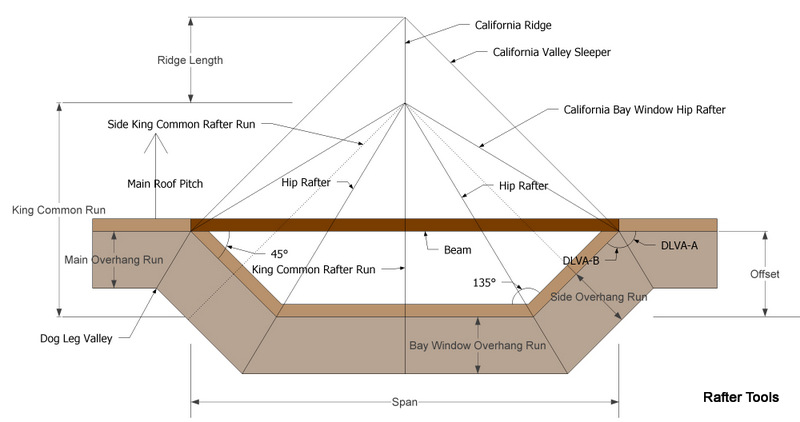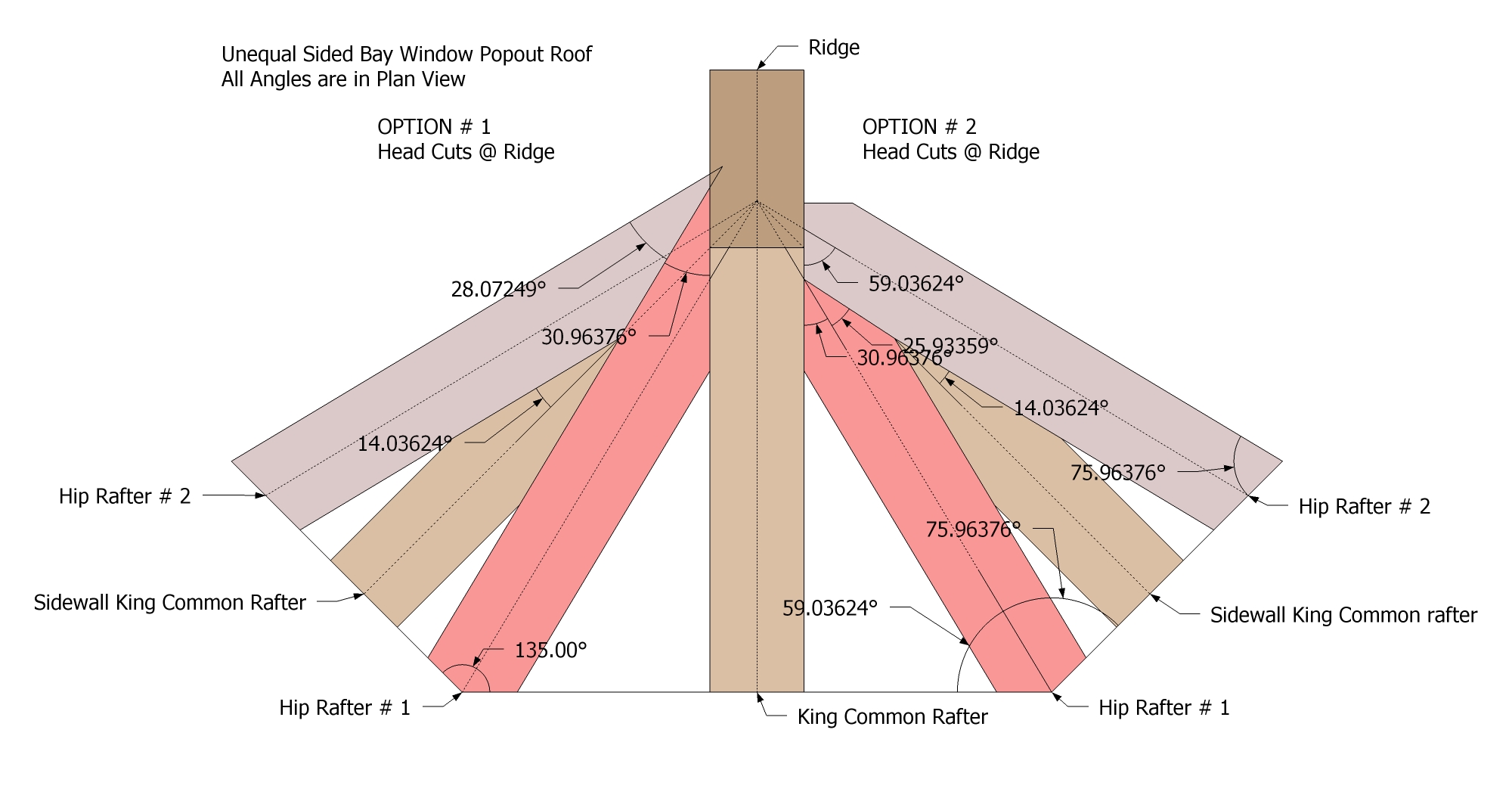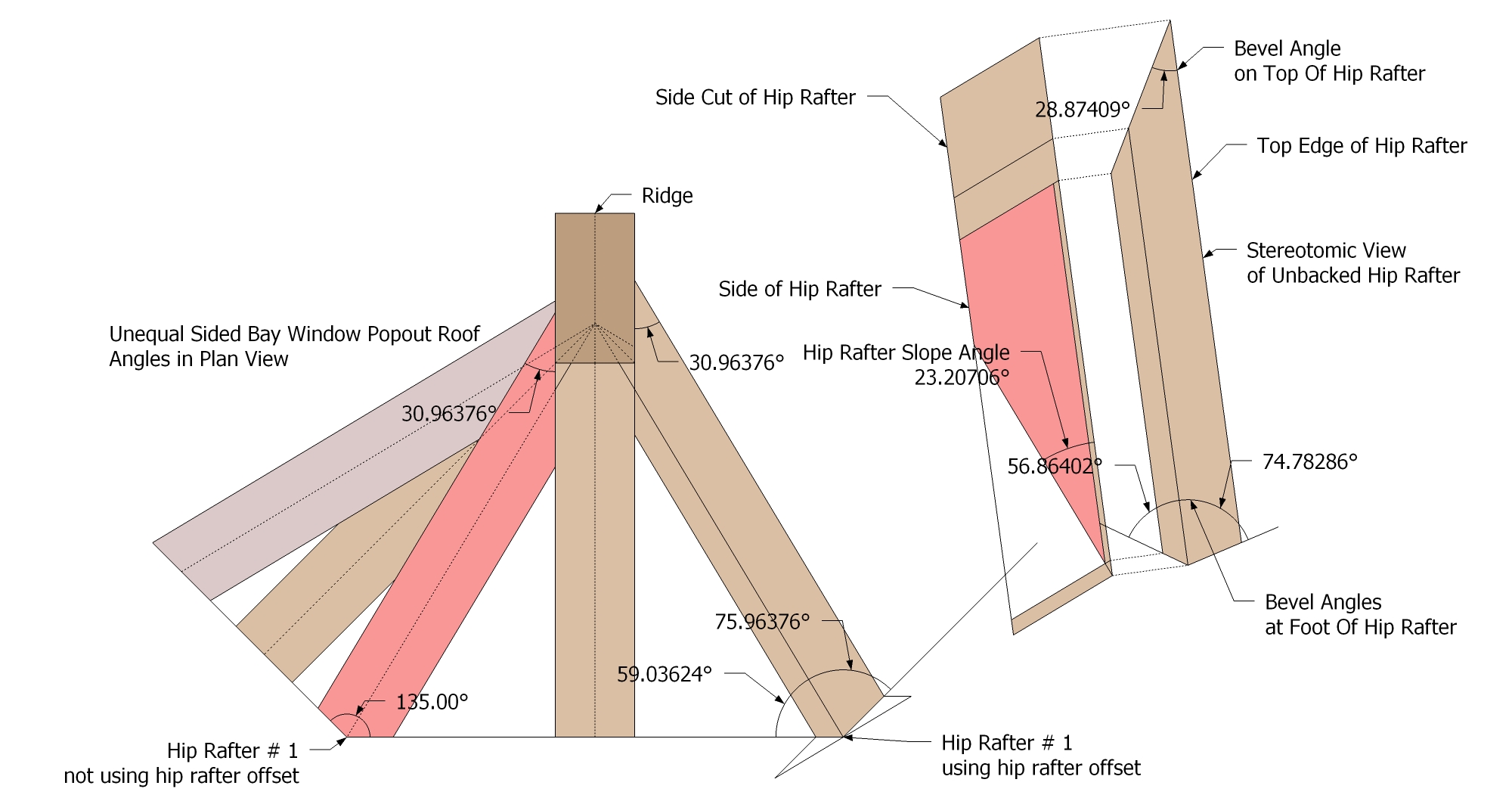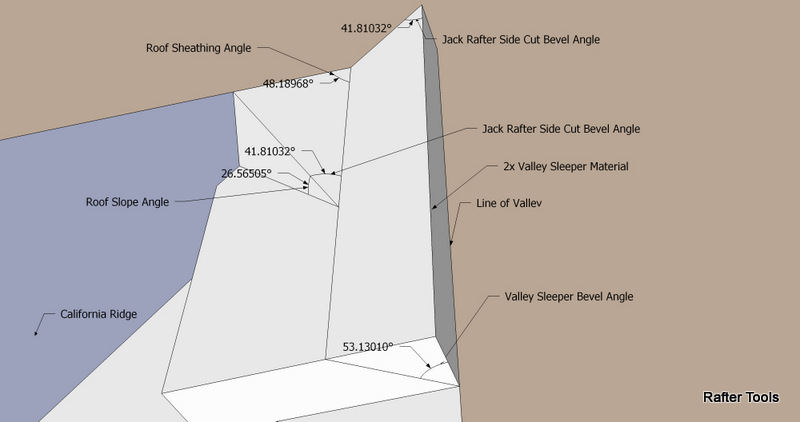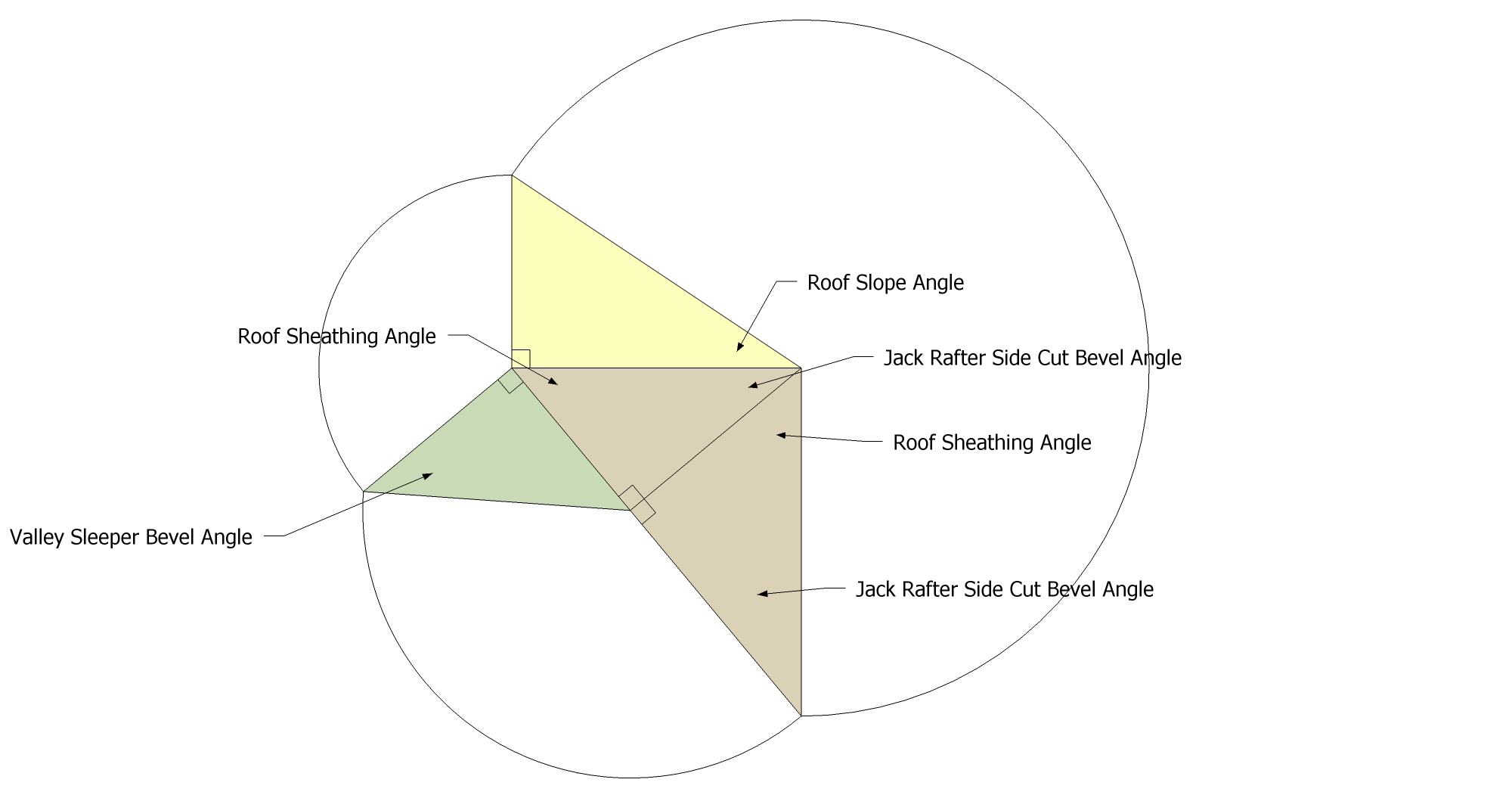The california baywindow roof calculator will calculate the angles and rafter lengths for a typical 45° baywindow
The corner angle of the baywindow is 135° and the plan angle is 67.5°.
Baywindow Roof Pitch or Angle
Select the input type from the input menu, Imperial/English Inch base 12 —— default, enter roof pitches from 1—24
like 8 for an 8:12 pitched roof, Metric 300mm base, enter millimeters like 200 for a 33.69007° roof pitch angle,
Decimal Inch base 10 —— enter base 10 decimal numbers like 5.7735 for a 30° roof pitch angle,
Degrees input —— use any roof angle in degrees like 33.69007°
- Length/Dimensions Input Menu Mode
- Imperial/English Inch base 12 —— default.. use American standard pitches over 12.
- Metric 300mm base —— 300mm is 11.81102 inches, similar usage to the American framing squares printed in inches.
- Decimal Inch base 10 —— use this option when working with tangents or using the Chappell Master Framing Square multiply the tangent of the angle by 10
The output mode selection can be completely different from the input mode is
- Length/Dimensions Output Menu Mode
- Imperial/English Inch base 12 —— default.. use American standard pitches over 12.
- Metric 300mm base —— 300mm is 11.81102 inches, similar usage to the American framing squares.
- Decimal Inch base 10 —— use this option when working with tangents or using the Chappell Master Framing Square
Common Rafter Run
This menu option allows you to set the common rafter run of the baywindow roof for calculating the angles and dimensions of the
baywindow roof. The Common Rafter Run will be from the outside of the exterior wall plate line to the building.
Overhang Run
This menu option allows you to set the rafter overhang run. The rafter overhang run will be equal on all 3 sides of the baywindow.
Seactcut Length
Enter a rafter seatcut length that will be used to determine the height of the heel cut (HAP) and the height to the top of the ridge.
Hip Rafter Width
Enter the Hip Rafter Width that will be used to determine the long point of the hip rafter length to ridge.
Ridge Width
Enter a ridge width that will determine the total the hip and common rafter lengths to the ridge.
Rafter Material Width
Enter the rafter material width that will be used to determine the placement of the sidewall jackrafter.
Rafter Material Depth
Enter the rafter material depth that will be used to determine the HAP of the rafters.
The Hip Rafter Length To Ridge is the center line layout dimension from plumb to plumb mark. Mark your baywindow plumb mark on the hip rafter with this dimension.
The Hip Rafter Drop for Roof Plane Alignment is the amount you drop the baywindow hip rafter from the HAP, Height Above Plate, to align the top shoulder of the baywindow hip rafter with the roof surface plane. The baywindow hip rafters need to be lowered at the seatcut to allow the jackrafters, common rafters and the fascia to all align in the same roof plane. If you don't drop the baywindow hip rafter seatcut then you will have to back out the baywindow hip rafter shoulders using the Hip Rafter Backing Depth Mark dimension that is perpendicular to the top edge of the hip rafter. Snap a line on the side of the hip rafter using the Hip Rafter Backing Depth Mark dimension and then set your saw to the Hip Rafter Backing Angle to bevel the edge of the hip rafter. In the 4th drawing below is also an example of using hip rafter offset to draw out the hip rafter roof plane alignment for the shifted hip rafter plumb lines that intersect the hip rafter level line that locates the hip rafter backing depth on the side of the hip rafter.
The California Hip Rafter Length is used on the hip rafter that sits on the california sleeper. It is the same pitch angle as the main hip rafter.
Sidewall King Common Rafter Length dimension is to the center point of the king common rafter plumb cut. The thickness of the hip rafters has already been deducted from this dimension.
